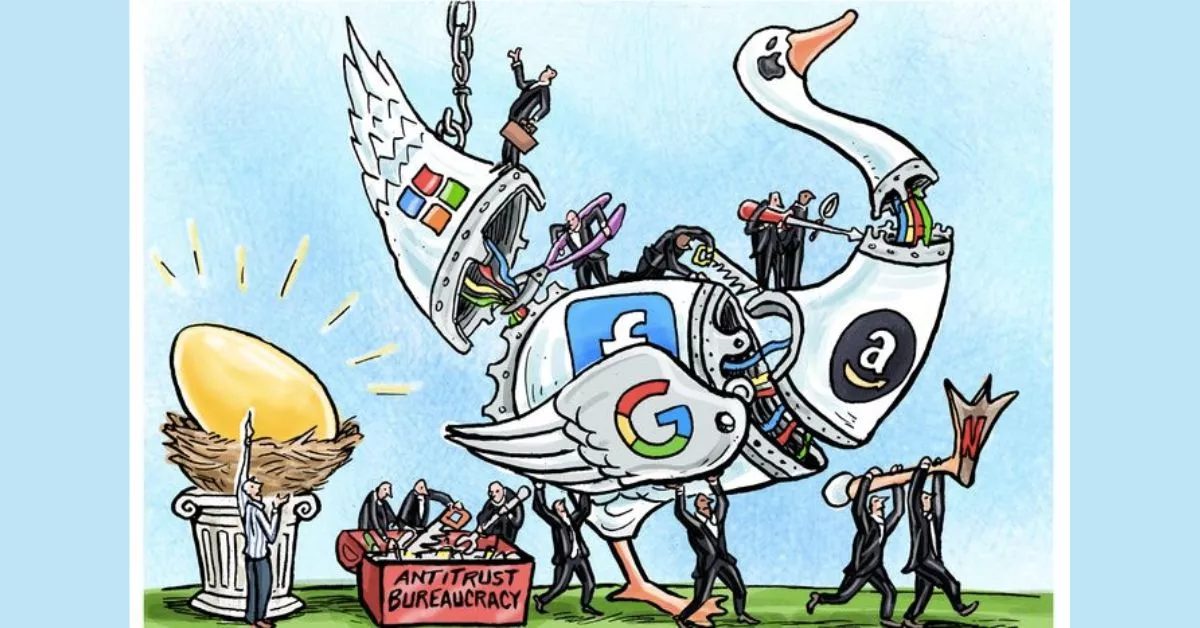In recent years, the digital advertising industry has found itself at a crossroads, influenced by regulatory scrutiny and antitrust actions against tech giants. These giants, which include household names like Google, Facebook (Meta), Amazon, and Apple, have long dominated the digital ecosystem, controlling significant shares of online advertising revenues.
However, as governments worldwide intensify their efforts to curb monopolistic practices, the potential implications of these antitrust actions could herald a transformative era for digital advertising. This post delves into the complexities of this evolving landscape, exploring how antitrust measures could reshape market dynamics, spur innovation, and redefine competitive strategies.
The Concentration of Power and the Call for Regulation
The digital advertising market has been characterized by its highly concentrated nature, with a few tech behemoths wielding disproportionate influence over the industry. This dominance has raised concerns regarding competition stifling, data privacy breaches, and unfair practices that disadvantage smaller players.
In response, regulatory bodies in the United States, European Union, and other jurisdictions have initiated antitrust actions to address these issues, aiming to ensure a fairer and more competitive digital marketplace.

Potential Outcomes of Antitrust Interventions
1. Decentralization of the Digital Advertising Market
One of the primary objectives of antitrust actions is to decentralize market power, thereby reducing the dominance of major tech companies. This could lead to a more diverse and competitive landscape, where smaller ad tech firms and publishers have a fair chance to thrive. Increased competition may drive innovation, improve service quality, and lower advertising costs, benefiting advertisers and consumers alike.
2. Enhanced Privacy and Data Protection
Antitrust actions often scrutinize the ways in which tech giants collect, use, and share consumer data for advertising purposes. As a result, these interventions could lead to stricter data privacy regulations and practices, compelling companies to adopt more transparent and consumer-friendly data handling policies.
This shift would not only address privacy concerns but also encourage the development of advertising technologies that prioritize user consent and data security.
3. Innovation in Advertising Technologies
The prospect of breaking up monopolistic structures could spur innovation within the digital advertising sector. Freed from the shadows of tech giants, smaller companies and startups might invest in developing novel advertising solutions, such as AI-driven targeting mechanisms that respect privacy, blockchain-based transparency tools, and immersive ad formats leveraging AR and VR.
This innovation wave could enrich the advertising toolkit available to marketers, enabling more effective and engaging campaigns.
4. Shifts in Advertising Strategies
As the digital advertising ecosystem becomes more fragmented and competitive, advertisers may need to reassess their strategies. Reliance on a single platform for reaching audiences could give way to more diversified approaches, involving a mix of traditional digital channels, emerging platforms, and direct-to-consumer engagement methods.
This diversification could help brands build more resilient and multifaceted relationships with their audiences.
5. Consumer Empowerment and Content Monetization
Antitrust measures could empower consumers by providing them with more control over their data and the ads they see. Additionally, content creators and publishers might benefit from fairer revenue-sharing models and greater autonomy in monetizing their content.
This could lead to higher-quality content and more sustainable business models for creators, further enriching the digital ecosystem.

Challenges and Considerations
Despite the potential benefits, the road to transforming the digital advertising landscape through antitrust actions is fraught with challenges. Legal battles are often lengthy and complex, with uncertain outcomes. Moreover, the global nature of the tech industry requires coordinated regulatory efforts across jurisdictions, a task that presents significant diplomatic and logistical hurdles.
Furthermore, the transition to a more competitive market could disrupt existing advertising operations, requiring businesses to adapt quickly to changing conditions. Marketers, publishers, and ad tech firms must stay abreast of developments, ready to pivot their strategies in response to new regulatory landscapes and market dynamics.
Conclusion
Antitrust actions against tech giants represent a pivotal moment for the digital advertising industry. While the path ahead is uncertain, these measures have the potential to catalyze significant changes, driving decentralization, innovation, and fairness in the digital marketplace.
As we navigate this transformation, stakeholders across the advertising ecosystem must remain vigilant, adaptable, and proactive in shaping a future that benefits all participants – from the largest platforms to the individual consumer. Embracing change, fostering competition, and prioritizing privacy and transparency will be key to thriving in the new era of digital advertising.










